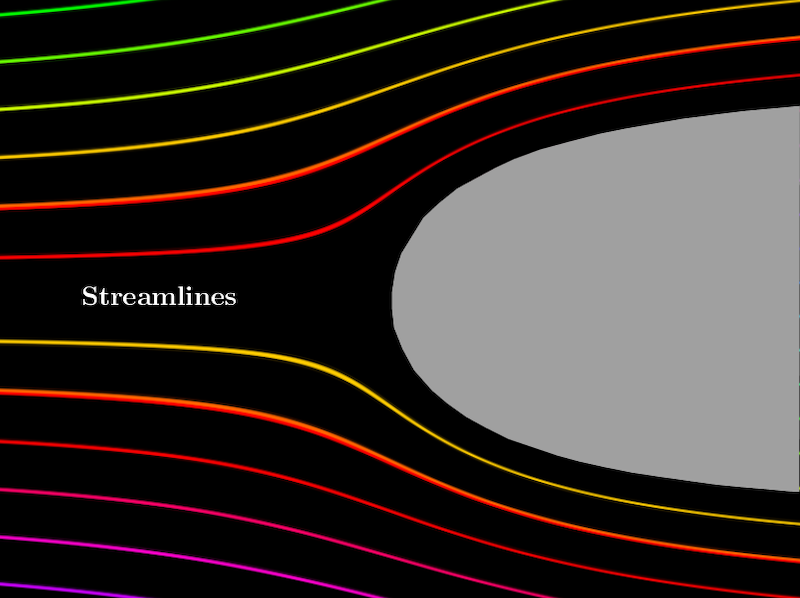6.1: Aplicaciones de Mappings conformes
- Page ID
- 114141
Hidrodinámica
Si tenemos un fluido (en estado estacionario) incompresible, no viscoso, estamos interesados en encontrar su campo de velocidad
\(\mathbf V (x,y)= \left(u(x,y), v(x,y)\right).\)
A partir del análisis vectorial sabemos que 'incompresible' significa que la divergencia\(\text{div}\,\mathbf V =0.\) (Decimos\(\mathbf V\) es libre de divergencia. ) Suponemos que también\(\mathbf V\) es un flujo potencial y por lo tanto está libre de circulación; es decir,\(\mathbf V = \text{grad } \phi\) para algunos\(\phi\) se llama el potencial de velocidad. Así\(\phi\) es armónico porque
\(\nabla^2\phi = \text{div } \text{grad }\phi = \text{div } \mathbf V=0.\)
Así cuando\(\phi\) resolvemos para podemos obtener\(\mathbf V\) tomando\(\mathbf V = \text{grad } \phi\). Eso es
\ (\ begin {eqnarray*}
u=\ frac {\ parcial\ phi} {\ parcial x},\ quad v=\ frac {\ parcial\ phi} {\ parcial y}.
\ end {eqnarray*}\)
El conjugado\(ψ\) de la función armónica\(ϕ\) (que existirá en cualquier región conectada simple) se llama función stream, y la función analítica
\(F=\phi +i\psi\)
se llama el potencial complejo.
La función stream debe satisfacer
\ (\ begin {eqnarray*}
u=\ frac {\ parcial\ psi} {\ parcial y},\ quad v=-\ frac {\ parcial\ psi} {\ parcial x}.
\ end {eqnarray*}\)
Finalmente, las líneas de constante\(ψ\) tienen\(V\) como sus tangentes, por lo que las líneas de constante\(ψ\) pueden interpretarse como las líneas a lo largo de las cuales se mueven las partículas de fluido; de ahí el nombre de función stream.



